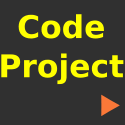 Old, But Still Useful!
Old, But Still Useful!
This old WWII military training video is still useful regarding Morse code:
This is an antique United States Navy Training Film from 1943/1944, in which proper hand-sending of Morse code is demonstrated. The film covers some basic principles and mechanics of manual keying of the International Morse code, as used during WWII.
Amateur (Ham) radio operators find Morse code (and the ‘CW’ mode, or ‘Continuous Wave’ keying mode) very useful, even though Morse code is no longer required as part of the licensing process. Morse code is highly effective in weak-signal radio work. And, preppers love Morse code because it is the most efficient way to communicate when there is a major disaster that could wipe out the communications infrastructure.
While this military film is antique, the vintage information is timeless, as the material is applicable to Morse code, even today.
There’s more about Morse code, at my website: http://cw.hfradio.org
For additional joy, here are a few of old films regarding Morse code:
Morse Code – Principles and Basic Techniques (US Army Signal)
(Learn to Send Perfect Morse Code by Hand – Vintage Training Film (Ham Radio / CW))
Vintage 1944 Radio Operator Training: How to Send Morse Code (CW) by Hand
This one is a pretty cool film:
1939 Film: New Zealand Shortwave Communications; Morse code (CW)
I’ve also created a play list, and most of the videos are still online. Once and a while something changes and I have to update the list. Here is the list:
Original Title: TECHNIQUE OF HAND SENDING, by Department of Defense, Published 1944
Usage CC0 1.0 Universal
TECHNIQUE OF HAND SENDING
PIN 23735 1944
IMPORTANT PARTS OF THE TRANSMITTER, TENSION SPRING, ADJUSTING CONTACTS, ADJUSTING SPRINGS. ELEMENTS OF MORSE CODE, TIMING, AND PARTS OF BODY THAT FUNCTION WHEN TRANSMITTING CODE. IMPORTANCE OF CORRECT POSITION AND OPERATION.
Producer Department of Defense
Enjoy!













This brings back memories of high school when I took Radio and TV shop. The instructor was a retired Chief Petty Officer and he had a set of 78 RPM Navy code practice records. Every class day, we were required to listen and copy those old records as part of our radio training. I not only learned the code but memorized the military phonetics. the records made learning the code easy and enjoyable.
Ed, K5TX
I had Ameco (I think that was the spelling) records. That’s how I learned. In my case, it caused more harm than good, because I ended up with a mental translation table where I have to count dits and dahs and still do a lookup as to what those represented. I am re-learning code now with the Koch method ( http://NW7US.us/koch ). With this method, I hear the code as a language of discrete units of sound. I don’t have time to look up anything mentally. I just hear what it is and respond just like I would to any other language’s words. This technique is beginning to work, for me.
Was great to see videos on how to send cw on a straight key. This is the technique I grew up learning. The straight key is and will be around for years. 73, Richard,K0RDS
Fascinating stuff, and the code in the background is beautifully clear and rhythmic. The 1939 NZ video gives a real glimpse of how things were back then in that totally different world. Thanks for posting these.
73
Colin GM4JPZ